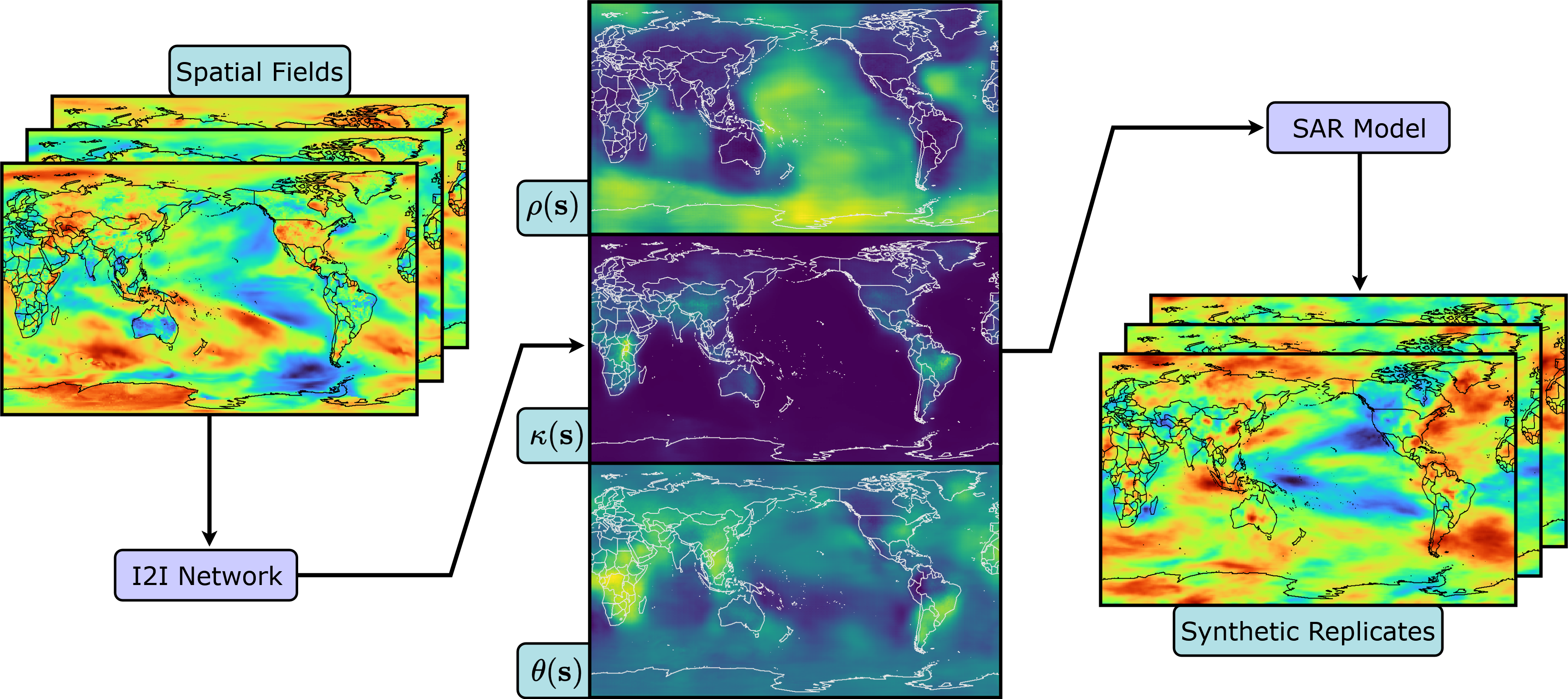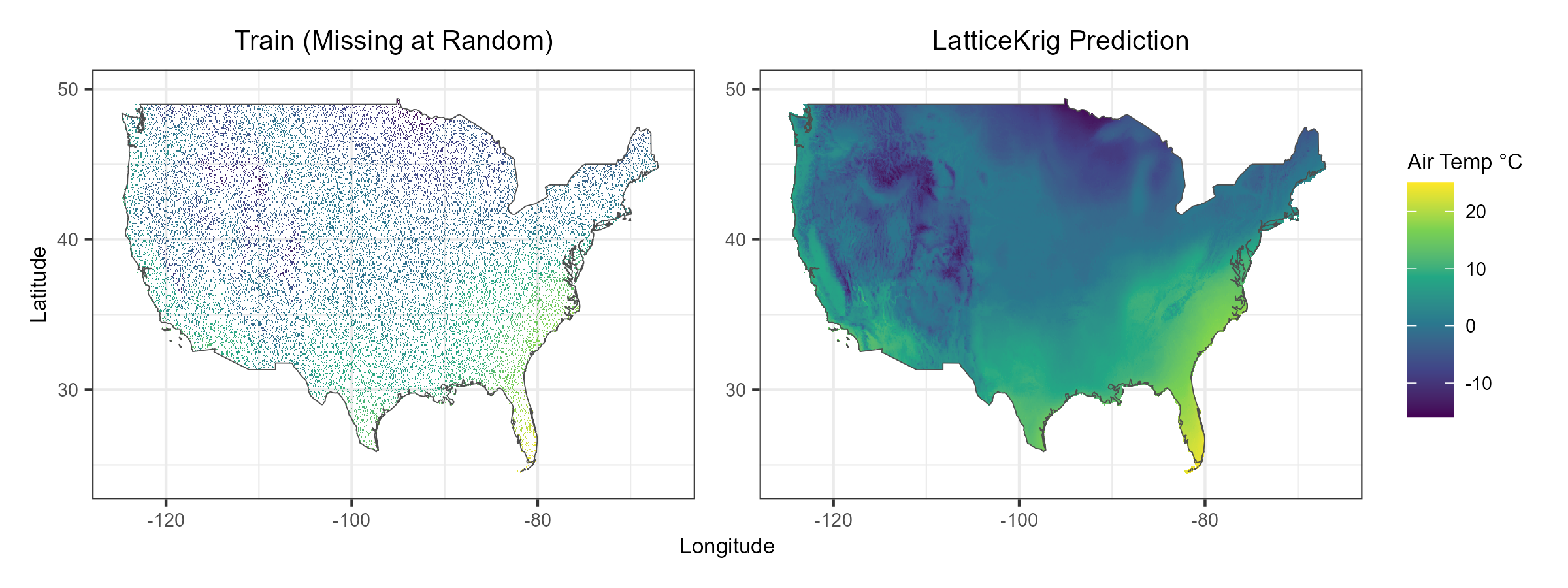Software Projects
LatticeVision
Available for download on GitHub. Simply clone the repository and install the necessary dependencies using the README instructions, which will also install the latticevision package.
The code in the repository has everything you need to train image-to-image (I2I) neural networks—using both U-Net and transformer-based (ViT) architectures—for non-stationary parameter estimation on large spatial datasets. You’ll find tutorial notebooks, data-generation scripts, training and evaluation procedures, and example applications to climate-model outputs. The majority of the code is written in Python, since PyTorch is required for all deep learning aspects. Data generation and some additional experiments are in R, as the framework is paired with the LatticeKrig R package (more detail below).
The code also serves as supplementary material to the paper.

LatticeKrig R Package
Available for download on CRAN. When in R, just type install.packages("LatticeKrig") to download.
The LatticeKrig R package provides methods for efficiently interpolating massive spatial datasets using many basis functions and sparsity in key matrices. One of my recent projects focused on increasing the efficiency and accuracy of such methods, which led to my involvement in developing the new release of LatticeKrig. Many computational roadblocks have been removed in the current version, and a number of new methods and improvements have been added. Further updates will include experimentation with different basis functions, change of support, and data fusion capabilities!

Other Projects
Below are a few projects that have come from summer internships, trying to understand new concepts, or just having fun!
In order to better understand LLMs, specifically the transformer architecture, I built my own here, and trained it on the TinyStories dataset on my little GeForce RTX 3060 laptop GPU. This was done as a project for an exciting mechanistic interpretability course that I sat in on.
During a summer at NASA JPL, I worked on using unsupervised anomaly detection ML methods to detect failure modes of the Deep Space Network (DSN) antenna fleet.
In order to properly understand the fundamentals behind neural networks, I first built one from scratch in Numpy, then using PyTorch, and then in Flux.jl here.
For more fun projects like speeding up R on your local computer using fast linear algebra primitives, experimenting with derivative free/zeroth order optimization methods, and even a template for this website, check out my Github!
